Sponge-galls on Sagebrush - Rhopalomyia pomum
Looking at strange galls on Sagebrush
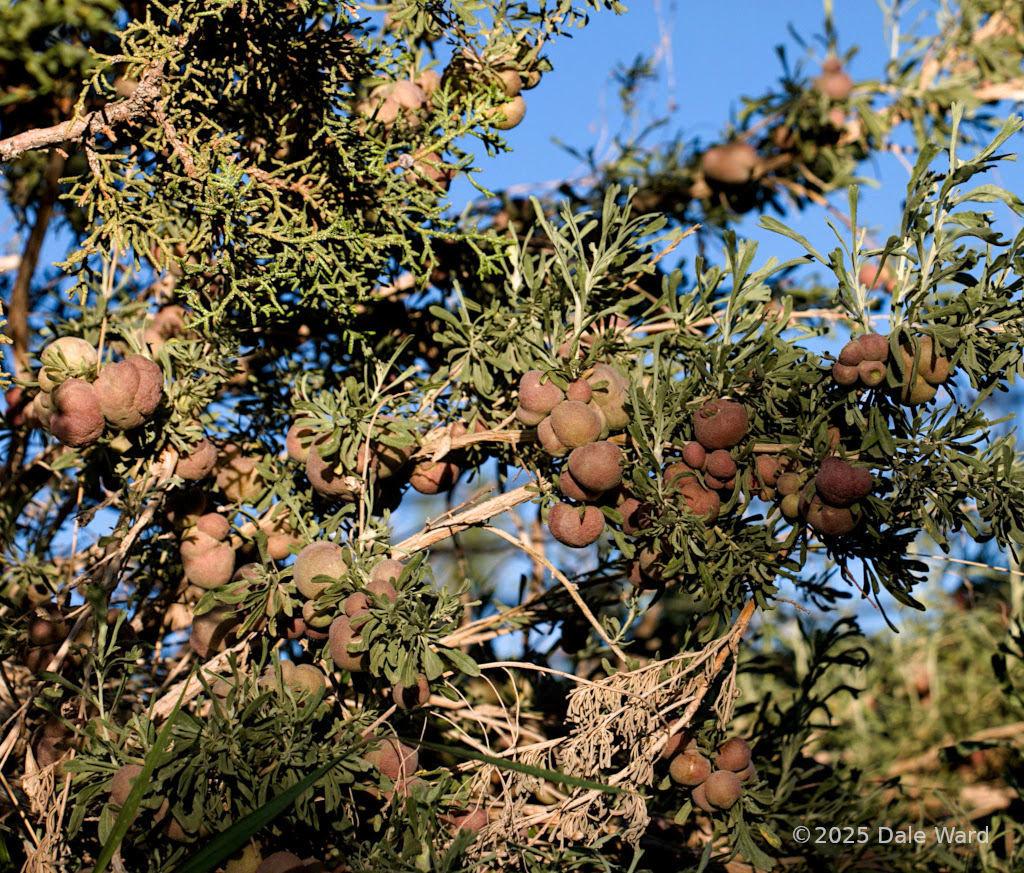 At first glance, the Sage looked like it was full of grapes or apples.
At first glance, the Sage looked like it was full of grapes or apples.
“You know,” my Wife said one morning, “Since you seem to have this gall-fixation thing going right now, you might want to look at the Sagebrush over by the horse corrals. The Sagebrush are absolutely covered in these strange galls that look like plums.”
Hmm. That did sound interesting…so off I went, to the horse corrals.
When I got to the Sagebrush, it was exactly as my Wife had said. The Sagebrush had lots of big, fleshy-feeling galls on them. There were one or two of the plants that had the majority of the galls, but other, nearby plants in the clump also had a few.
The galls looked for all the world like a cross between heirloom tomatoes and apples or plums. Some were nearly spherical, single galls, and others were multi-lobed, as if several galls had grown together.
There was a multitude of sizes, from perhaps a centimeter in diameter up to maybe five or six centimeters. The galls were a little bit squishy-feeling, in the same way that an over-ripe tomato feels squishy. The outside of the galls had a velvety feel.
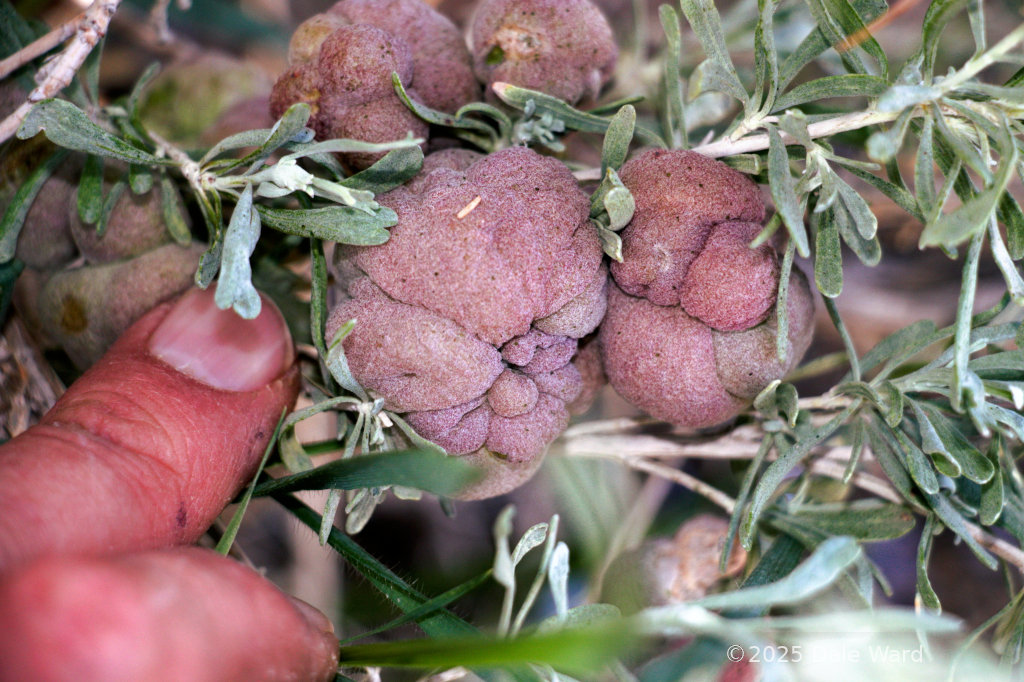 Another view of the galls. Notice the multiple lobes on the galls.
Another view of the galls. Notice the multiple lobes on the galls.
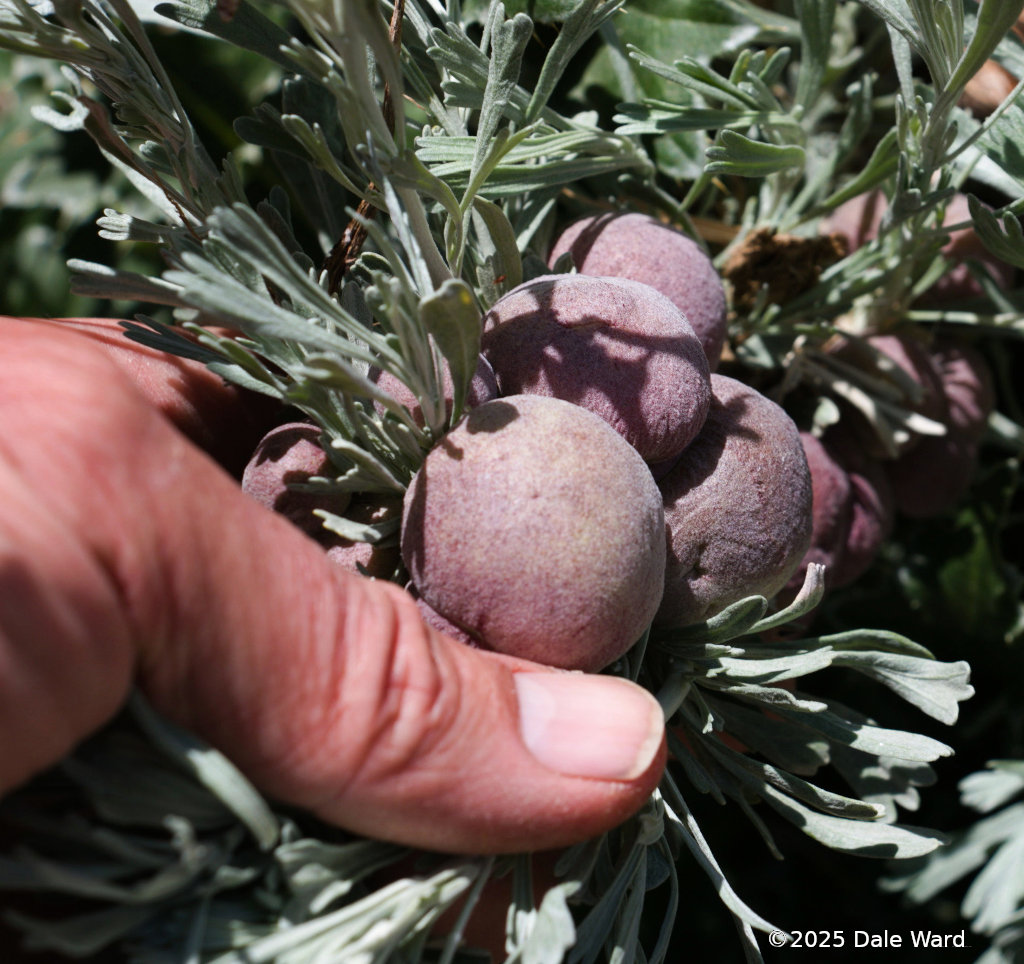 Sponge-galls on Big Sage. These ones don’t have multiple lobes, as the galls in the previous photo. Each of these galls is mostly spherical.
Sponge-galls on Big Sage. These ones don’t have multiple lobes, as the galls in the previous photo. Each of these galls is mostly spherical.
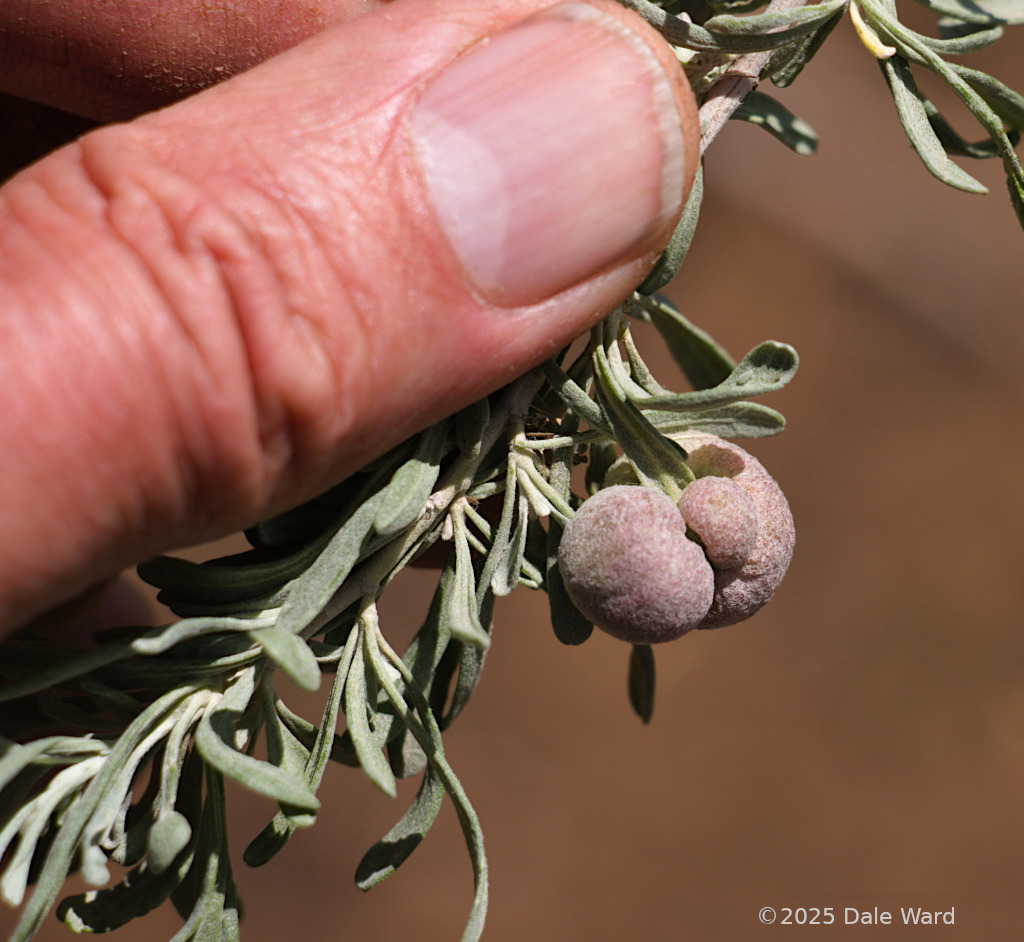 The galls were quite variable in size. Here’s one of the small, multi-lobed ones. Also - if you look at the leaf in the lower left of this photo, you can see a (smaller yet) gall that is green. Is that also a Sponge-gall, or a gall caused by a different species? I don’t know.
The galls were quite variable in size. Here’s one of the small, multi-lobed ones. Also - if you look at the leaf in the lower left of this photo, you can see a (smaller yet) gall that is green. Is that also a Sponge-gall, or a gall caused by a different species? I don’t know.
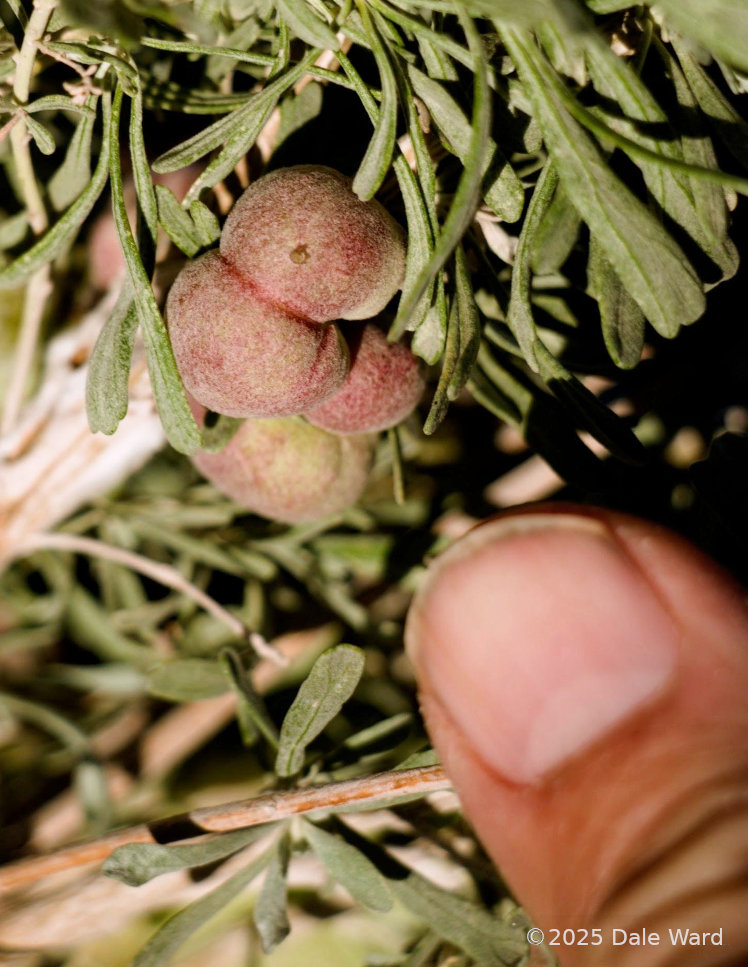 A lot of the galls were multi-lobed, like these ones.
A lot of the galls were multi-lobed, like these ones.
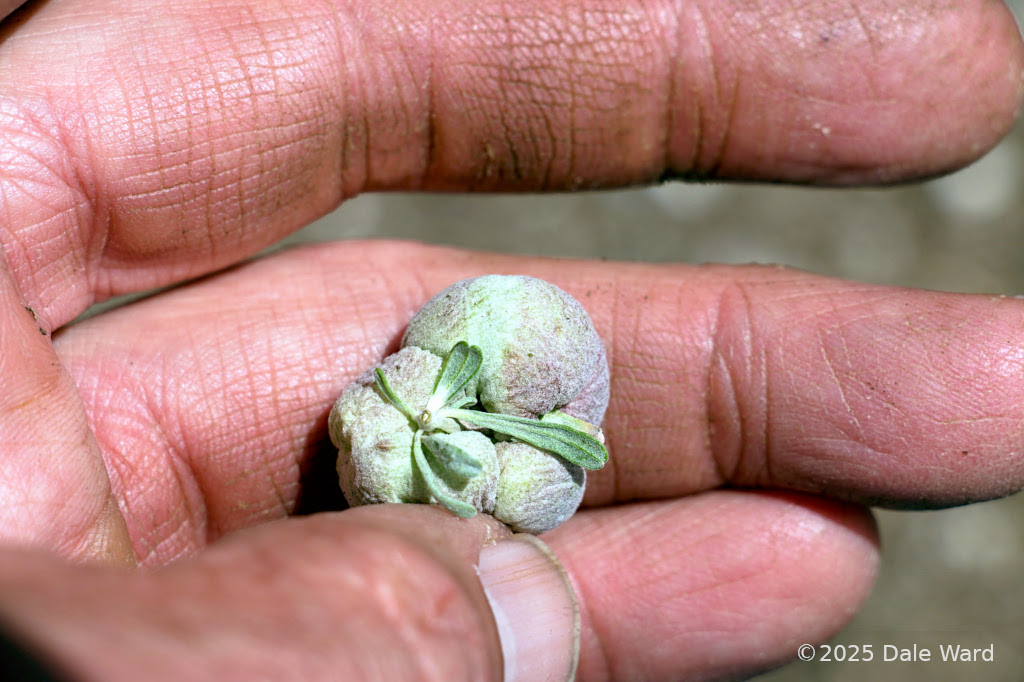 I picked one of the galls to examine it more closely. I could see that the gall was actually attached to/growing from the Sage’s leaf tissues. This gall looks like an amalgamation of (at least) three smaller galls. I’m not sure if it developed as a single, multi-lobed gall, or if it was actually created by the merger of galls which touched.
I picked one of the galls to examine it more closely. I could see that the gall was actually attached to/growing from the Sage’s leaf tissues. This gall looks like an amalgamation of (at least) three smaller galls. I’m not sure if it developed as a single, multi-lobed gall, or if it was actually created by the merger of galls which touched.
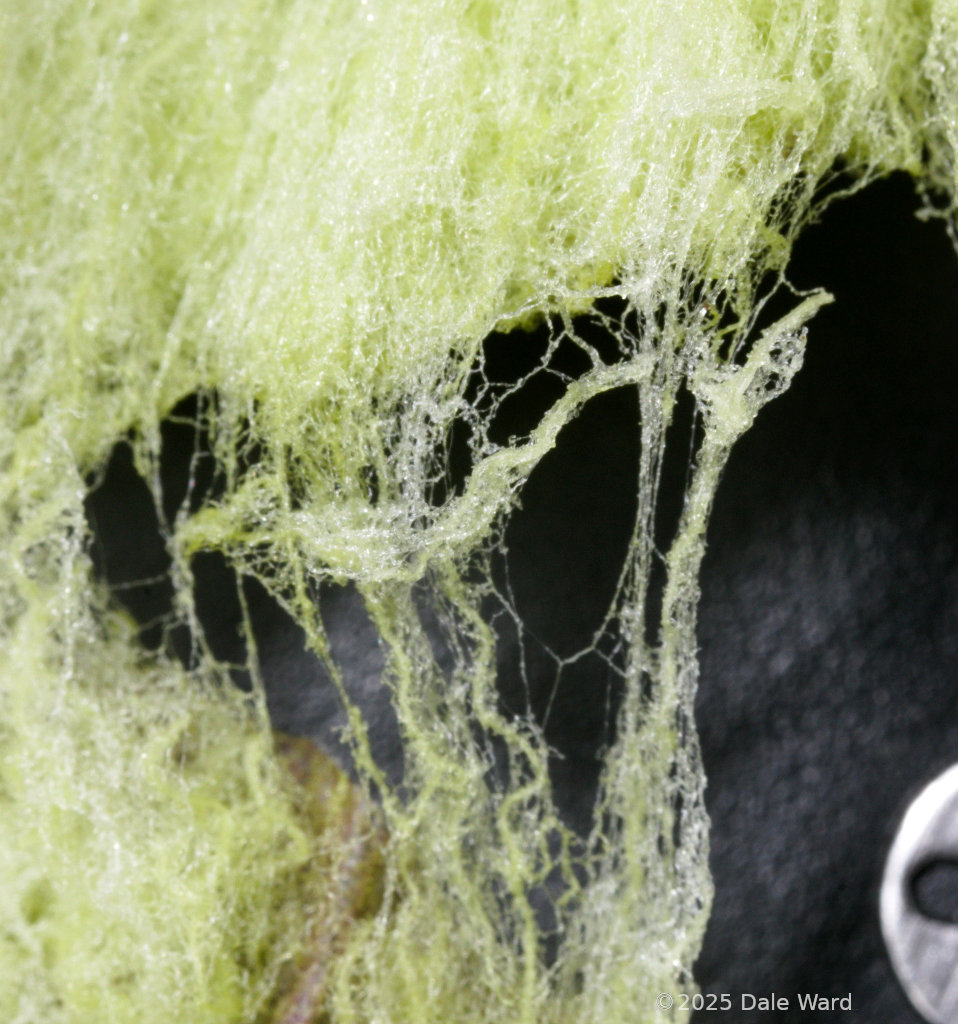 The inside of the gall was not-at-all what I expected it to be. Based on the way the galls felt when I squeezed them, I was expecting them to be full of a fluid, or gel, like a tomato. Instead, I found that the galls were packed with a whitish-green fibrous material.
The inside of the gall was not-at-all what I expected it to be. Based on the way the galls felt when I squeezed them, I was expecting them to be full of a fluid, or gel, like a tomato. Instead, I found that the galls were packed with a whitish-green fibrous material.
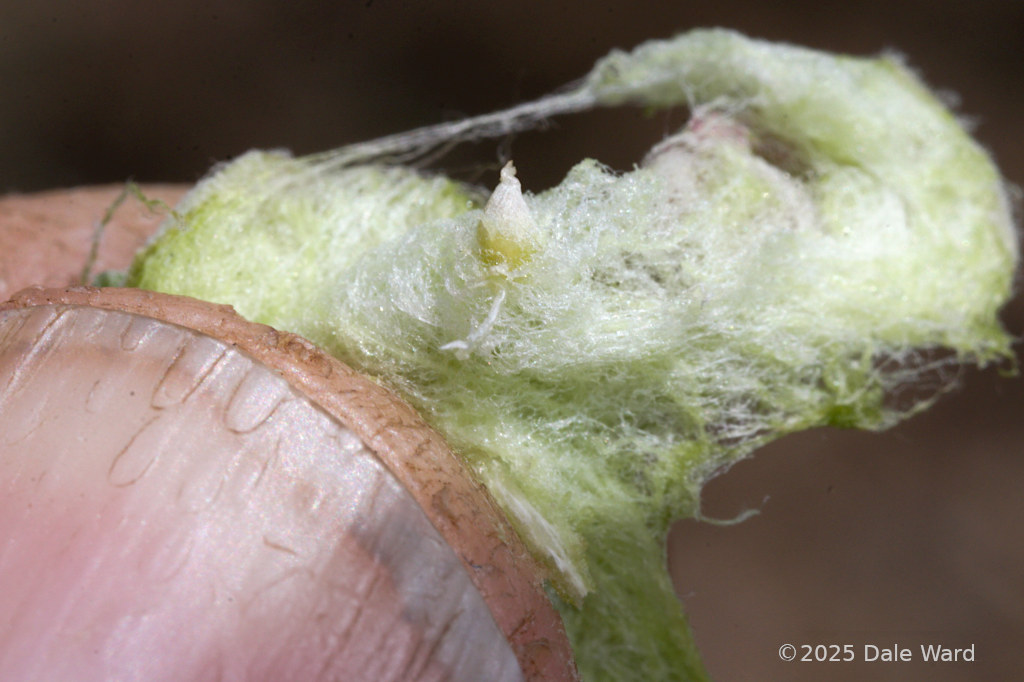 The only think that I found inside the gall that was not the whitish fibrous material were a couple of little nubs of vegetative tissue. I didn’t find anything that looked non-vegetative inside those.
The only think that I found inside the gall that was not the whitish fibrous material were a couple of little nubs of vegetative tissue. I didn’t find anything that looked non-vegetative inside those.
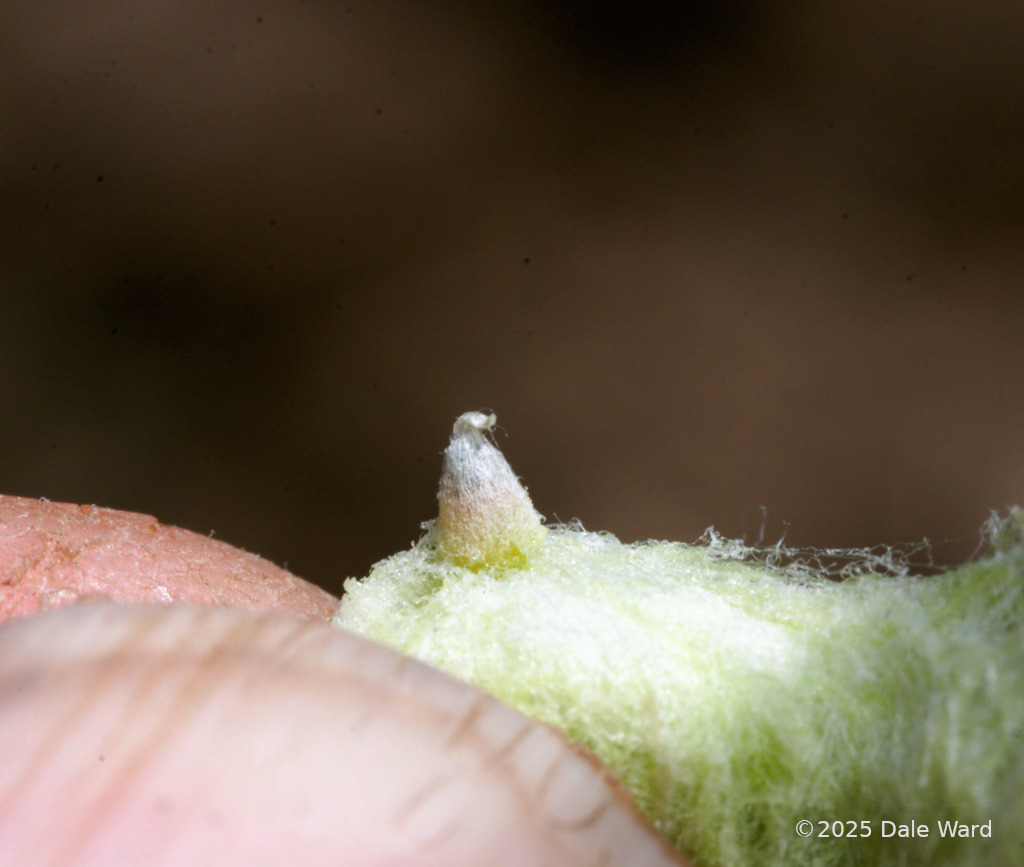 The only think that I found inside the gall that was not the whitish fibrous material were a couple of little nubs of vegetative tissue. I didn’t find anything that looked non-vegetative inside those.
The only think that I found inside the gall that was not the whitish fibrous material were a couple of little nubs of vegetative tissue. I didn’t find anything that looked non-vegetative inside those.
Reading my handy “Plant Galls of the Western United States” guide suggests that these galls are created by a Midge - Rhopalomyia pomum. That’s yet another Sagebrush gall-creating Rhopalomyia Midge that lives in this area.
Hufbauer (2004) did a really interesting study on these Rhopalomyia popmum sponge-galls. He collected around 160 of these galls in Southern Utah, then kept track of what insects emerged from them.
He found that galls often contain multiple Rhopalomyia popmum Midges - he found between 0 and 16 midges emerging from each gall. More midges tended to emerge from larger galls. All of the midges emerging from a given gall were typically the same sex - all of them were males, or all of them were females.
That’s pretty interesting - but what I found to be most interesting is that he found at least six different types of parasitoid wasps also emerging from the galls. I think that’s a stunning number of types of parasitoids to come from the gall of a single species. Granted, it would be possible that some of these parasitoids could by hyperparasitoids (parasitoids on other parasitoids), or could be parasitoids on the various inquilines of the gall. But that, too, would be amazing.
While gall size was positively correlated the number of gall-forming Midges that emerged, gall size was not correlated to the number of parasitoids that emerged.
The number of lobes on the gall was not correlated to the number of gall-forming Midges that emerged…but the number of lobes was positively correlated to the number of parasitoids that emerged from the gall.
So…larger galls tended to have more Rhopalomyia Midges emerge from them. And galls with a greater number of lobes tended to have more parasitoids emerge.
I don’t really know what to make of all this, but I find it to be pretty interesting. The detail of the world, the tangled interrelatedness, is mind-blowing.
Sources:
Hufbauer, Ruth A. (2004). OBSERVATIONS OF SAGEBRUSH GALL MORPHOLOGY AND EMERGENCE OF RHOPALOMYIA POMUM(DIPTERA: CECIDOMYIIDAE) AND ITS PARASITOIDS. Western North American Naturalist 64(3) 324-330.
Russo, Ronald A. 2021. Plant Galls of the Western United States (Princeton Field Guides, 142). Princeton University Press. ISBN-10: 0691205760.